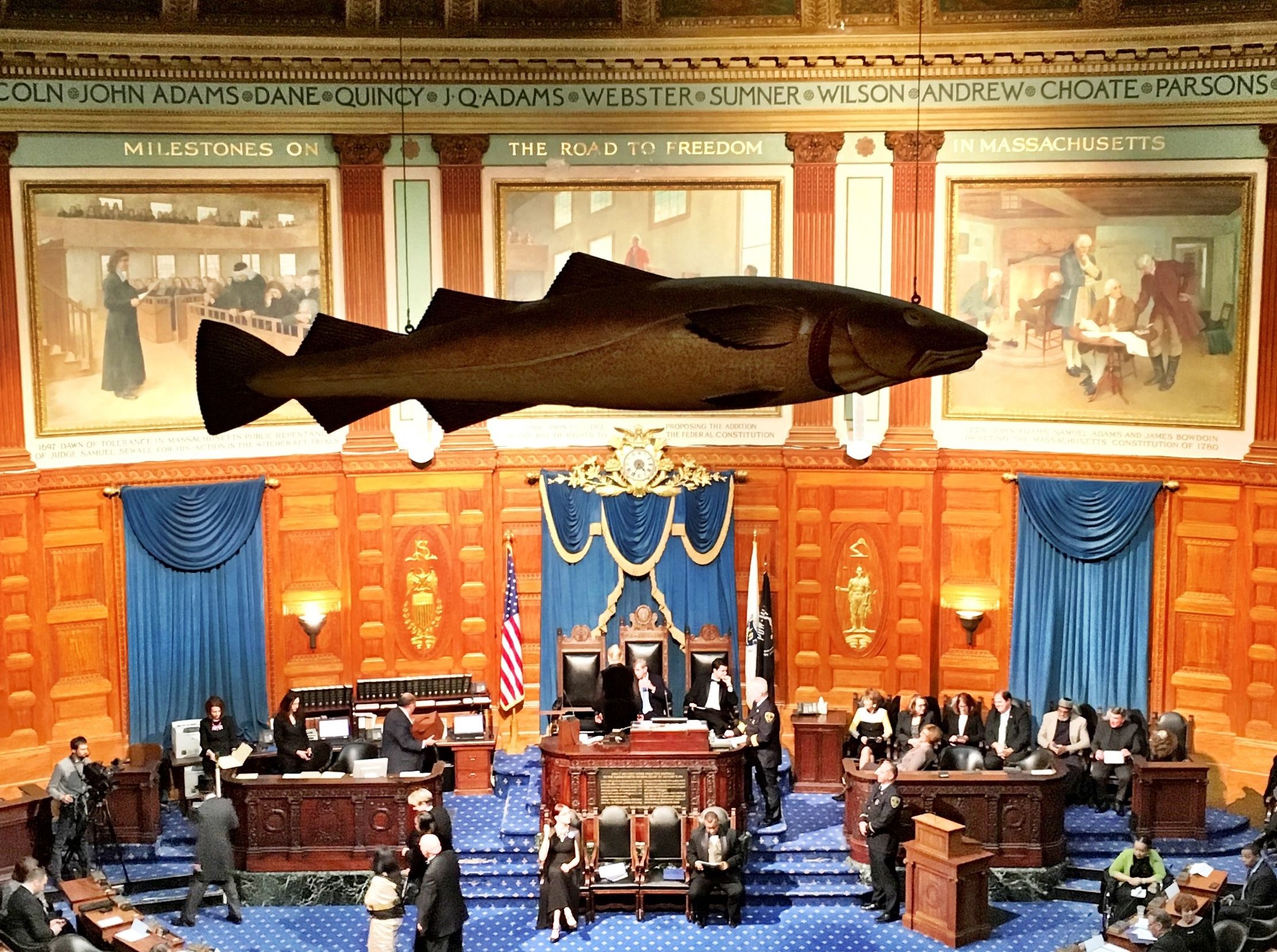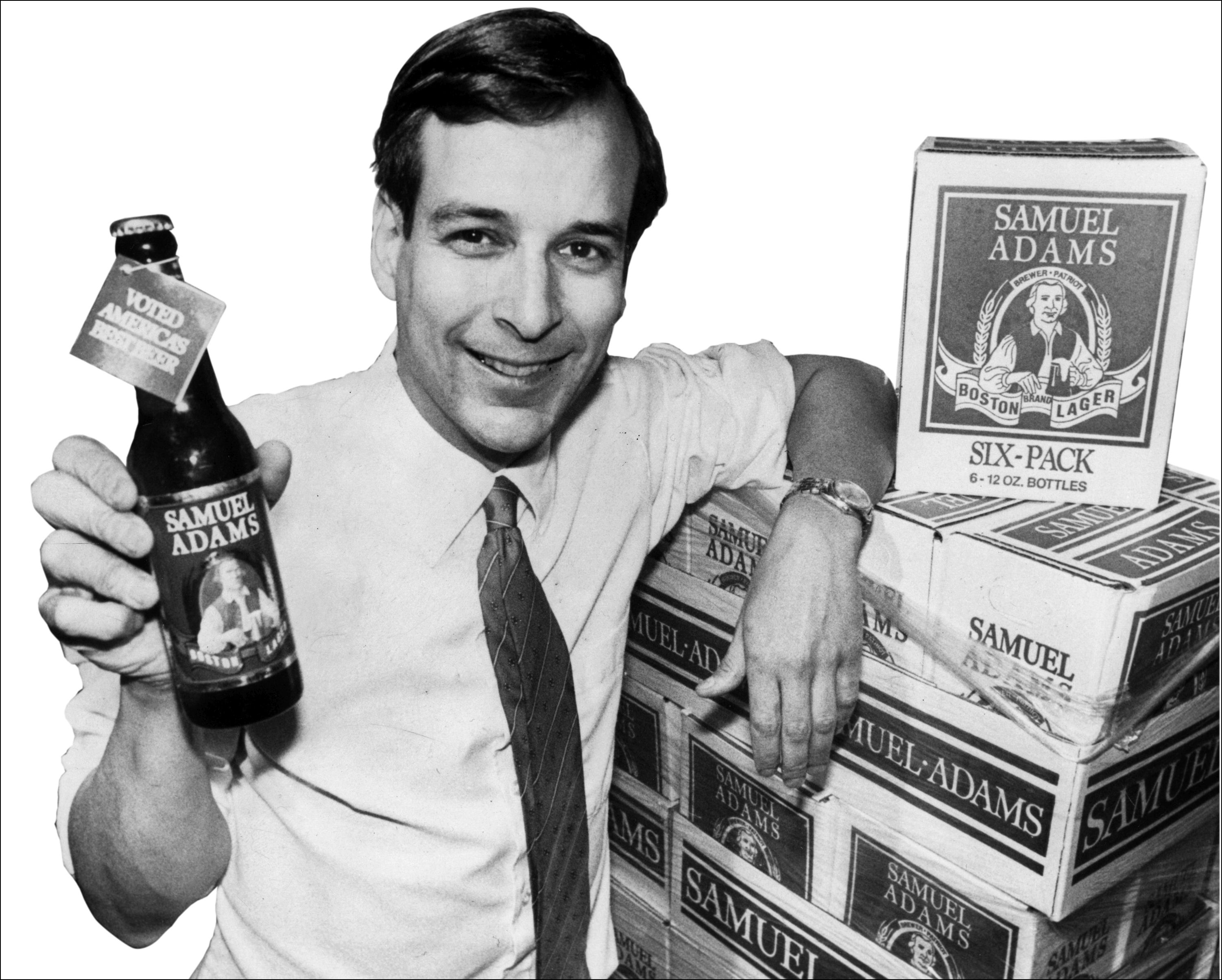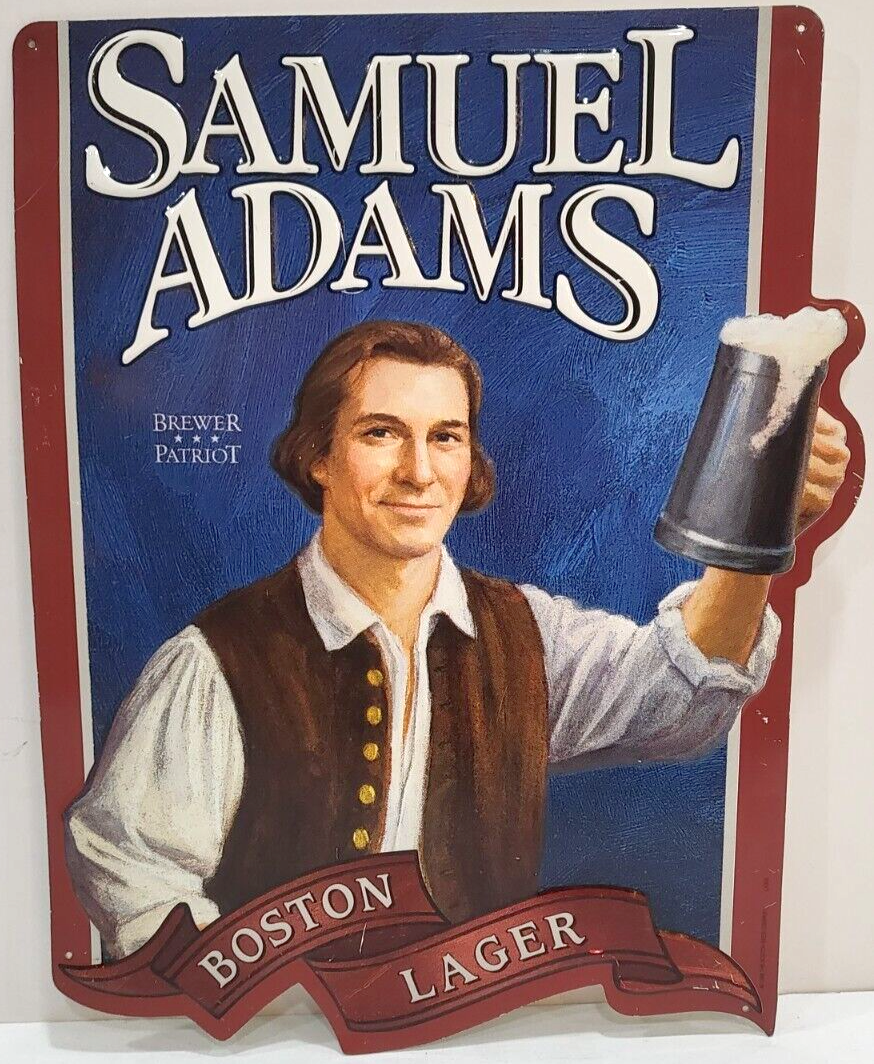We debated whether to name our new beer for the state symbol of Massachusetts or a favorite Boston patriot.
-
May 2023
Volume68Issue3
Editor’s Note: Jim Koch founded the Boston Beer Company in 1984 and is widely considered a founding father of the American craft-brewing movement. He is the author of Quench Your Own Thirst: Business Lessons Learned Over a Beer or Two, from which this essay was adapted.

In early 1985, after I had brewed the first batch of our new beer, but before I had a name for it, I kept wondering: How I would get people to drink it? How would they even know about it?
I couldn’t afford to advertise, but I knew that getting the word out somehow would be almost as critical to success as the beer itself. A brewer in New York told me about public relations firms and how they could help get your story out. I hadn’t thought much about the impact that might have. I believed the Koch heritage of brewing and our family recipe – as well as my own determination to upend the beer industry – might make for a good story, one that the media might notice if we had a skilled hand dangling newsworthy items before their eyes. I interviewed a couple of PR firms and chose Sally Jackson, a respected media-relations professional in Boston with many clients in the restaurant and hotel business.
Sally got to work right away, making a list of places where she could open the door, and sending out dozens of letters on my behalf. We also worked on coming up with a name. One obvious option was “Louis Koch Lager,” after my ancestor who had created the recipe we were using, but I had already written that one off.
People found it difficult to pronounce “Koch.” Koch is pronounced like “cook,” but some people unthinkingly turn it into an obscenity, so I didn’t think “Louis Koch Lager” was such a great name for a product you expect people to put in their mouth.
Over the previous year, I had been compiling a big list of names, a couple hundred in total, including one most people liked: “New World Lager.”
“New World” was the name of one of the first clipper ships built in Boston and constructed at the Donald McKay shipyard. I had a label designed that featured a ship’s bow cutting through the frame of the image, and I also had “New World Lager” business cards printed up to see how it would look. I wasn’t sure about the name, and I didn’t know anyone with marketing expertise.
One of my investors had suggested that I bring in an ad agency to help me. “Jim,” he asked me, “are you aware that there are professionals who come up with names for new products? Ad agencies do that all the time.”
“Oh, really?” It had never occurred to me that some people could spend all their time just coming up with the right name for a new company or product. I asked Sally, and she directed me to a Boston boutique-ad agency called Gearon Hoffman Goransson, whose partners were all ex-bartenders. I told the principals that I wanted a memorable name, one that was assertively American — not some fake European name — and one that would be a strong call at a bar.
They turned their creative talents loose. A couple of weeks later, they scheduled a meeting in their conference room where they presented their ideas. This was well before the show Mad Men; I had no idea that I’d be treated to a formal presentation, complete with mockup boards. I sat down while the agency partners stood before me with a buzz of excitement in their eyes.

“Okay,” Dan Gearon said, “so, we set to work on it, and we went down different paths. We came up with a large group of names, and almost all of them were duds. But we did find the perfect name for your beer, Jim. It’s a strong beer call, it’s memorable, and it’s rooted in Boston’s history like no other name. Are you ready to hear it?”
I couldn’t wait for this perfect name.
He pulled out a board. His voice deepened with suspense. “The name for your beer, Jim, is . . .” I could almost hear the drum roll. “Sacred Cod!”
“Sacred Cod?” I asked. “Really? Sacred Cod?”
What?! I couldn’t believe it. Did they just say Sacred Cod? They explained that the Sacred Cod is a state symbol of Massachusetts — a carved wooden codfish that to this day hangs in the Massachusetts State House. Sure, it has history. But a beer named Sacred Cod? Yuck! Who wants to think of stinky fish when they’re tossing back a cold one?
Even Louis Koch Lager was a better name, and I doubt my great-great-grandfather needed an ad agency to name his beer.
Years later, the agency said Sacred Cod was a joke, but they seemed pretty serious at the time.
The three of them offered up several other names that they also thought might work: “New World Lager,” “Joy Street,” “Golden Oak,” “Liberty Tree,” and the always-humorous “Whipping Post.” Now, that’s a bar call — “Hey, I need a Whipping Post!”
I went away and pondered all these names. Aside from Sacred Cod, none was terrible, but again, none was an obvious winner to me. I found myself returning again and again to another name on my original list: Samuel Adams.
I had long respected the historical figure Samuel Adams for the pivotal role he played in the revolution, all the more so because he was a firebrand and a rabble-rouser whom historians had largely overlooked. Our second president, John Adams, gets the lion’s share of the attention given to that family, alongside his son, John Quincy.

My high school history teacher, Miss Graham, a stern Ohio farm-lady type with steel-rimmed glasses and long gray hair, used to pass up the more famous American revolutionaries and instead talk about Samuel Adams and Boston. As she reminded us, the Declaration of Independence might have been signed in Philadelphia in 1776, but the “shot heard around the world” occurred in Concord, Massachusetts in 1775.
Thanks in large part to Samuel Adams, Boston had been at war with England for a year before the rest of the colonies caught up. Samuel Adams had been among the first of the Founding Fathers committed to the idea of American independence; he was the propagandist and organizer who stirred up the citizens of Boston to resist the British occupation of the city.
After the Revolution, Adams played a major role in the new government, succeeding John Hancock as the governor of Massachusetts. Yet he retained his strong belief in the common people, not the wealthy and well-born, telling his fellow citizens as the newly elected governor, “The sovereignty of a nation, always of right, resides in the body of the People,” and “An enlightened, free, and virtuous people, can as a body, be the keepers of their own Liberties, and the guardians of their own rights.”
I did a little research on Samuel Adams at the Boston Public Library, and the story got even better. Not only had he gone to Harvard, like me, but he had also been involved with making beer. Some books described him as a maltster and others as a brewer. To me, this was fate: a brewer and a revolutionary. Samuel Adams became my top choice.
At the same time, I still liked New World Lager and was open to considering a few of the ad agency’s options. Since people around me offered conflicting opinions, I resolved to do some primitive market research by taking my names from bar to bar. I’m a big believer that, if you have an important decision to make, you should find a way to validate your instincts. A woman who worked at BCG, Gail Hutchinson, was a graphic artist who had offered to mock up a label for New World and now for Samuel Adams. The result was the basic structure of the present-day label, complete with a rough likeness of Samuel Adams as its centerpiece. She charged me $400.
Depicting Samuel Adams was a problem for me initially; I couldn’t find a suitable likeness of the man. I had found a portrait of Adams dating from his years as a governor, but none from his younger days as a brewer and rabble-rouser. The closest thing was the statue of Samuel Adams that stands in front of Boston’s Faneuil Hall. I took some photos of the statue and gave them to an illustrator in New York City that the ad agency recommended. I also sent him a book of portraits by John Singleton Copley and asked him to do the portrait in that style. He came back with the image of Samuel Adams in his brewers’ vest, a version of which still appears on every bottle of Samuel Adams Boston Lager.
Meanwhile, the agency mocked up handmade labels for several other names. In February 1985, we pasted all the labels onto bottles and I went around to bars asking customers, bartenders, managers, and waitstaff for their opinions. The verdict wasn’t clear — some people liked Samuel Adams, some New World Lager, and some the other names on our list. I’ll also never forget one guy who looked at our Samuel Adams label and said, “It’s never gonna sell. ‘Cause guys drink beer. You need to put a phallic symbol on there. You need the Bunker Hill Monument. Call it Bunker Hill Beer; put that big, tall, straight monument right there on the label.”
Walking around with a six-pack of beers with different labels and names may not sound like high-quality consumer research, but it’s actually better than most of what you find in professional research reports — all those graphs, charts, and complicated verbiage that companies pay big bucks for. I had personally talked to almost two hundred people over five nights of barhopping. I had heard the tone of their voices and picked up on their body language. When I added up the numbers, New World and Samuel Adams had roughly equal numbers of votes. But I sensed that those who liked Samuel Adams felt more passionately about their choice.
I headed home one weekend knowing I had to decide. All entrepreneurs experience moments like this: times when outside experts, as valuable as they are, can’t help you; times when you have to look inward and go with what feels right. Most of the really important business decisions come down to judgment. Your brain is no smarter than your gut — you need both. And I had educated my gut by talking to two hundred real human beings.
I chose Samuel Adams, concluding that it was stronger and more deeply rooted in history than New World Lager. The New World label was prettier, but Samuel Adams Boston Lager suggested that I wanted to “throw the foreign beers out,” just as our Founding Fathers wanted to throw the Brits out. Plus, it felt better to go into a bar and ask for a Samuel Adams. It was as simple as that. I said at the time that Samuel Adams Boston Lager may or may not be a drop-dead name, but it was a good name, and a year from then, we would think of it as the drop-dead name. I look back at that decision now, and Samuel Adams does feel completely right.
I wonder where we would be today if we had gone with Sacred Cod.
“From Quench Your Own Thirst by Jim Koch. Copyright © 2016 by the author and reprinted by permission of Flatiron Books.

